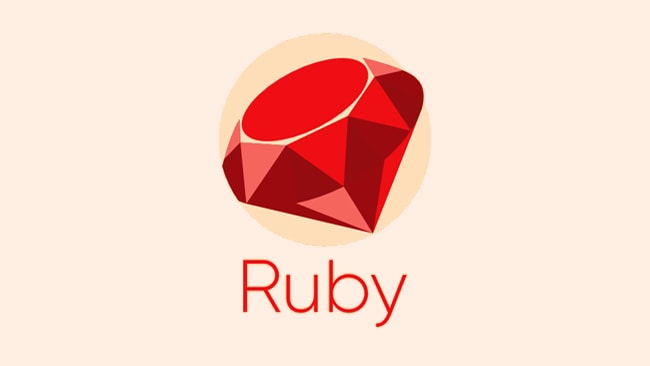There are tons of different programming languages out there that will help you with data collection and competitor monitoring. However, none of them get the job done quite like the Ruby programming language. Ruby is one of the easiest coding languages to learn and has more benefits beyond competitor monitoring.
What is Ruby?
Ruby is a high-level programming language created by Yukihiro Matsumoto and first released in 1995. High-level doesn’t mean that Ruby applications are hard to learn; it just means that this program uses natural “elements” and is easier to use than other programming languages.
The best part of Ruby isn’t even how easy it is to use for competitor monitoring. It’s got tons of other options that make it a great programming language to use all-around. But the best part about Ruby is that it’s entirely free. It’s free of charge, but also free to use, modify, copy, and distribute.
Why Choose Ruby?
There are tons of programming languages out there to learn, but none function the way Ruby does. Within Ruby’s framework, everything is an object, meaning that every piece of information or code can have its own actions (numbers) or properties (instance variables.) Ruby also allows for modifications of any kind because it’s built with a flexible language.
The visual aspect of Ruby also makes it one of the easiest programming languages to learn, especially for competitor monitoring. While there may be multiple variables that need programming, you won’t need to input variable declarations when using Ruby. Instead, there are simple naming processes to show the scope of the variable(s.)
Why Use Ruby for Web Scraping?
Web scraping is an activity that gets data from websites and allows you to modify and use it on your webpage. Most of the time, making your data is better than scraping it from someone else’s webpage. However, sometimes web scraping is the only way you can get the data you need. Ruby has two different web scraping tools — Nokogiri and Kimurai.
Nokogiri
This open-source software library is designed as a parser for HTML and XML within Ruby. Nokogiri uses CSS selectors or XPath selectors to parse through data. Parsing data means the HTML code gets the relevant data extracted as text. This text creates a structured memory that the computer understands and you can work with.
Kimurai
This web scraping framework is a bit more modern but also found within Ruby. Kimurai will allow you access to headless browsers, phantomJS, and many other items. This tool allows you to web scrape javascript rendered websites. Kimurai isn’t as versatile, but it’s still incredibly helpful.
Competitor Monitoring with Ruby
Competitor monitoring isn’t as ominous as it sounds. You have to observe your competition and pinpoint their weak spots so you can make up the deficit. Ruby and its web scraping capabilities will help you bridge the gap between what your competitors are doing and how you can do it even better.
What Does Ruby Identify?
In short, Ruby will help you find a whole slew of issues with your competitor’s setup (if there are any.) Even if there aren’t necessarily errors, there are still weak points that you can improve on your website. How fast it loads, how well it functions, things of that nature.
It gets easier every day for new websites to pop up as competition for your niche. If you’re not careful and don’t monitor them, they could become a big competitor down the line. If you monitor your competition’s web page’s overall performance, you’ll be able to make changes early and keep yourself two steps ahead.
How Does Ruby Do This?
Ruby not only helps you build web pages easily but keeps track of their performance too. Sometimes, though, to get more accurate readings, you’ll have to get something called an APM (application performance management.) It will keep in-depth track of how the application is running and if it needs tweaks or adjustments.
APMs track the overall health of any web page or application. Once this data is collected for a long period, it’s easy to see the faults and how to fix them. You’ll be able to see, for example, why your competitor’s website is slowing down and how to prevent it from happening on yours.
Every application, Ruby or otherwise, is bound to have errors. People make mistakes, and coding can be a tricky process. Plus, with things constantly changing or being upgraded, there are bound to be some compatibility issues. When competitor monitoring, you can see these issues on other people’s sites and make sure it’s not replicated on yours.
Will Ruby Do It All?
Unfortunately, no. Ruby is fantastic for general purpose tasks like web scraping, data analysis or competitor monitoring, but implementing change comes down to you. You need to be on top of tracking the changes in your and your competitor’s web pages. A more proactive, rather than retroactive, approach will keep you ahead of the competition and get more traffic to your site.
If you’re not closely monitoring the data that Ruby collects for you, you’re not using the software correctly. Ruby can help you track your competitor, but all changes must be implemented by you. If you don’t, all that data you’re collecting goes to waste. Even if it’s just a quick check-in each day, you’ll see how to improve your website.
Conclusion
Web scraping and competitor monitoring go hand in hand. If you know how to do the former, it’s easy to transition into doing the latter. Ruby may not do it all for you, but it gives you the tools to make the changes necessary. Competitor monitoring isn’t about spying on the competition — it’s about finding errors that might have been overlooked and making sure you don’t do the same.
Ruby is a fantastic programming language to learn. Hopefully, this Ruby tutorial has given you a better idea of how to use Ruby for competitor monitoring. It’s not only about collecting data; it’s about how you use it, too.




Leave a comment
Have something to say about this article? Add your comment and start the discussion.